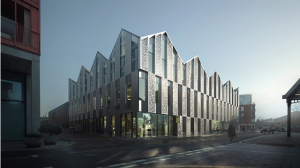Demand for flex space continues to massively outstrip the demands for traditional office space. In fact, the vacancy rate for older spaces is quite high. A lot of businesses are even moving from long standing offices to new, modern, flexible facilities. What we want to do is have a look at how to navigate in the current climate and what it means for commercial architecture.
What is flex space?
Before we offer some tips, we want to give a quick refresher of flexible space. The basic idea is that it combines multiple uses in a single facility. So, unlike a traditional office where it can only serve that one purpose, flex spaces can suit different types of work as well as a host of other uses.
Think about the experience
 One of the most crucial things with flex space is to think about how to make sure people have a great experience. Increasingly, property owners and managers need to approach it in a similar way they would hospitality space. This means accounting for comfort while maximising quality.
One of the most crucial things with flex space is to think about how to make sure people have a great experience. Increasingly, property owners and managers need to approach it in a similar way they would hospitality space. This means accounting for comfort while maximising quality.
What you need to do here is look at amenities. The more you can get in the building, the more likely you will be to draw people in. Think about creating space for everything from art exhibitions to concerts. You can even do things like have dynamic space for sports. It will make people want to spend more time in the property beyond their working day. It also rewards them for making the effort to travel to the office rather than work from home.
The goal should be to drive value in different ways. Firstly, you give tenants amenities and commercial architecture they can get enjoyment from. Secondly, hosting events can be a great way for tenants and members of the wider community to mingle. It could unlock new opportunities for them, meaning they are more likely to stay.
Measuring performance
In the past building owners and managers would measure how successful properties were by looking at occupancy and tenancies. However, that does not work very well for the modern economy. With hybrid working, a lot of people spend at least part of their working week at home. So, the occupancy rate can be much lower. However, that doesn’t mean the space is ineffective.
A better option here is to measure performance by looking at footfall. How many people are using the different spaces? It will help you track the number of users at different points. You can then see what uses of the space generate the biggest amount of interest. That can shape how you do things going forward.
It is also a good idea to think about the various revenue streams you can have access to here. Don’t just think about how much people pay to work in the building. Look at how much you can make from events and other uses.
Talk to us about commercial architecture
Whether you are creating a new building or re-imagining an existing one, it is wise to think about flex space. It will make the property more attractive to potential end users. Plus, it has the likelihood to provide the best returns for you.
Coffey Architects has a lot of experience here. Our past projects include a number of pieces of flexible commercial architecture. You can have a look to learn more about what we do and to see our creative approach. Then, if you want to plan a project, you can contact us.